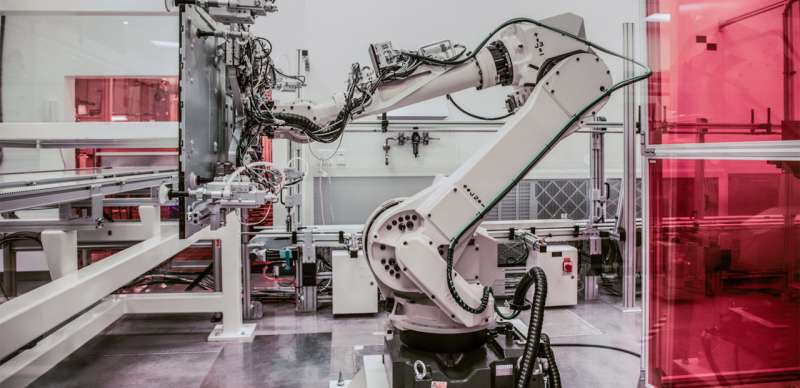October 3, 2018 weblog
Experimental release of Robot Operating System for Windows poses attractive pathway for developers

How serious is Microsoft in earning a place in the frontlines of support for developers playing with robotics?
The answer is clearly reflected in Microsoft's work with Open Robotics and the ROS Industrial Consortium and with news-making focus on the Robot Operating System for Windows. (The consortium is on a mission to improve the productivity and return on investment of industrial robots.)
Microsoft has seen the potential impact of robots, for example, in manufacturing. "Governments, manufacturers, and academics around the world are investing in the next generation of manufacturing, sometimes referred to as "Industry 4.0."
Lou Amadio, principal software engineer, Windows IoT with ROS for Windows, in his blog posting spoke of manufacturers' interests in making robots more aware of their surroundings, easier to program and safer to be around.
The latest news on this ambition is that Microsoft has announced an experimental release of ROS for Windows 10. "Microsoft is excited to announce an experimental release of ROS1 for Windows," according to the announcement.
Usama Jawad wrote about the announcement in Neowin. Jawad said the release has the tools and libraries to get developers on their way to build "complex robots, while also towing the security features of Windows 10 IoT."
Not that developers need any reminder of something called ROS. As project notes affirmed, "Many developers leverage the Robot Operating System (ROS), a set of libraries and tools which help you build complex robots. ROS is used in many cutting-edge robotic projects around the world." The new kid on the block is an experimental release of ROS1 for Windows.
Looking at all this, Evan Ackerman shared his reaction with IEEE Spectrum readers: "Hooray." Not that any technologist should hold a grudge against Linux, but for the robotic newbie, get serious.
"One of the biggest obstacles to getting started with ROS is that it also involves getting started with Linux. For many people, this means taking your happy and familiar Windows computer, partitioning a hard drive, figuring out how to install Linux from scratch, and then learning how to use it well enough to install ROS and start doing ROS things," wrote Ackerman.
Windows ROS could ease the experience in getting started. The direct involvement and integration being extended by Microsoft carry advantages. Ackerman added, "Microsoft will host the Windows builds for ROS1 and shortly ROS2, as well as provide documentation, development, and deployment solutions for Windows."
Meanwhile, Microsoft's work with ROS was reflected in a demo at ROSCon 2018 in Madrid. Microsoft showed a Robotis Turtlebot 3 robot, running the ROS release known as Melodic Morenia. It recognized and steered toward the closest person to the robot.
"The robot runs Windows 10 IoT Enterprise on an Intel Coffee Lake NUC using a new ROS node which leverages hardware accelerated Windows Machine Learning."
More information: blogs.windows.com/windowsexper … #tDs87oTBGTBzbFLK.97
© 2018 Tech Xplore




















